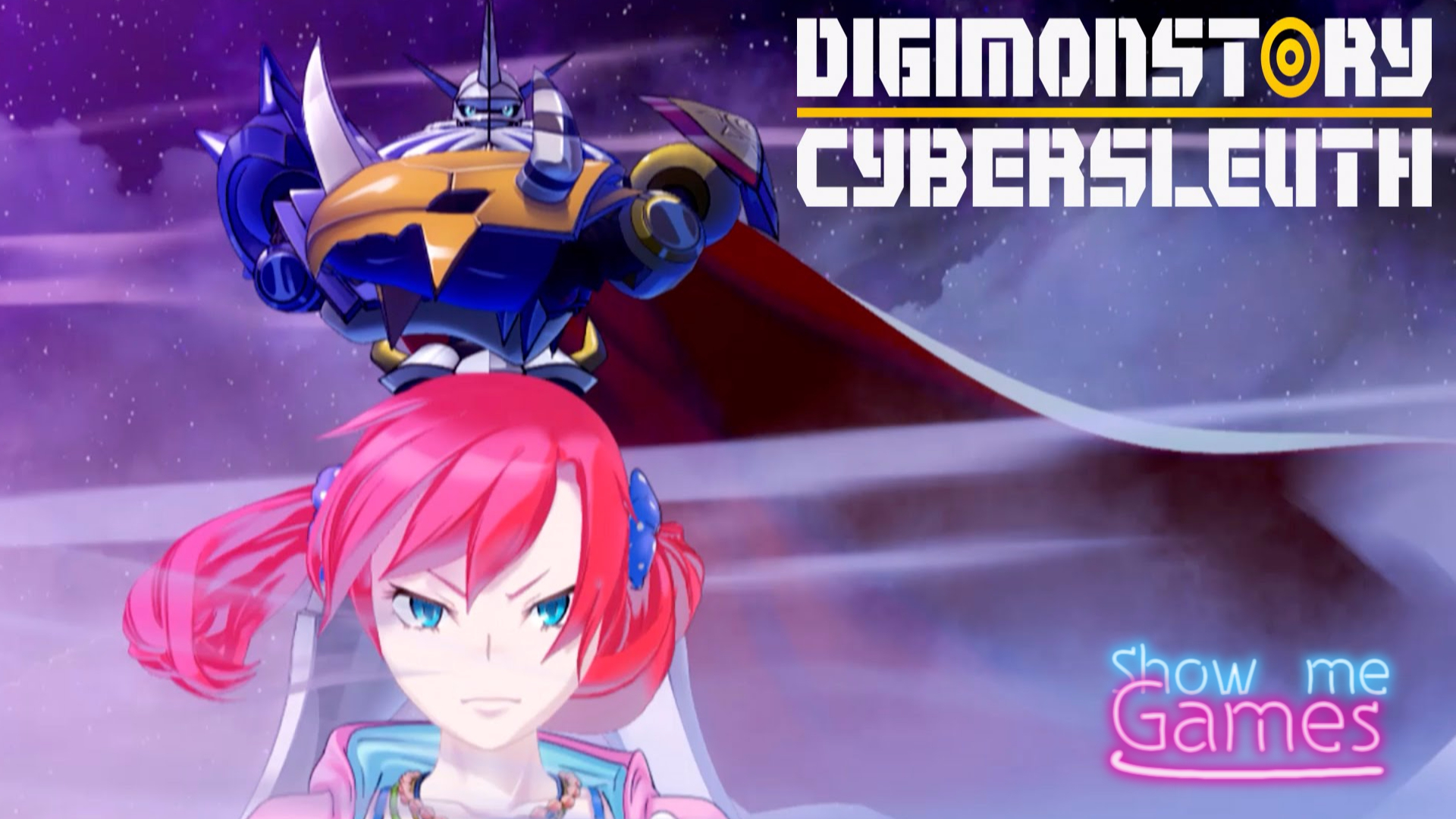- Developer: Media. Vision
- Publisher: Bandai Namco Entertainment
- Platform: Ps4, Ps Vita
- Release Date: 12th March 2015
It’s been awhile Digimon. Back in the early 90’s, a thing called Pokémon reigned supreme and obviously people wanted a slice of that pie, so in came the digital answer to Nintendo’s Pocket Monsters. Digimon did pretty well in its first few years but eventually succumbed to the Poke-monolith and disappeared from sight. The franchise was still around in the meantime but never as big as it once was, with only fighting and racing games coming out in the UK, leaving the franchise’s core genre missing from the west for quite a while. Well, Digimon is back just in time for it’s 15th anniversary with a story about a Cyber Sleuth.
Digimon Story: Cyber Sleuth takes place in modern day Tokyo, starring a young boy or girl that you can name. Spending your free time in chat rooms and a virtual reality world, a hacker appears to you and your fellow chatters and threatens to hack your accounts unless you meet him in the virtual world of EDEN. Yourself and a few other members present agree to the hacker’s demands which begins a series of events leading to your character meeting an infamous detective called Kyoko Kuremi who takes you under her wing as an apprentice detective and starts your journey to becoming Tokyo’s cyber sleuth.
Digimon World on the PlayStation has a rather open world design, allowing you and whatever Digimon you raise to go and adventure wherever you would like. As an alternative Digimon Story switches to a more structure more akin to Persona games, which will have you exploring individual streets of certain areas in Tokyo such as the ultra popular Shibuya Crossing and the less popular Nakano Broadway shopping centre. This actually helps to ground the farfetched fiction back into reality by tying a real world set up to the bizarre events that take place over the 60 hours you’ll spend in this universe.
Much like Persona 4, the action takes place within two different realms. Real world Tokyo is where you will spend most of your time getting to know the different characters and solving cases, which usually involves some random fetch quest or other and a visual novel’s worth of dialogue setting up and concluding the quest. Some, however, will require you to go to the digital world, a set of somewhat repetitive dungeons in which you must defeat x amount of enemies or talk to a specific Digimon and defeat them. The cases or quests themselves are generic yet capable and entirely optional. The rewards for doing most of these quests are small, pieces of equipment and cyber sleuth points that don’t seem to do much. While they are optional, some rewards you don’t want to miss out on and later in the game these cases unlock super bosses and the ability to create some of the most powerful monsters for yourself.
Your party is set by a data memory and not necessarily number of Digimon. There is a limit number of 11 but you likely won’t meet it until midgame at least, unless you’re packing a party of babies, due to the way the memory system works. So what if I have more Digimon than I can use at once? Well you can keep them in your farm! Little day care centres in the digital world where you can store 10 mons at a time. They’ll level up there, send you text messages through the menu system and even let you know when it’s time for you to digivolve them. It’s really quite handy, though there are only 5 farms on your first play through there are hundreds of places in the bank for you to store even more.
When you’re not at the farm or being a detective you’ll be inside computer world and fighting your way through linear dungeons. Combat is prompted by a random encounters system, which I thought we’d grown out of, that is timed quite well and doesn’t just throw battles at you every five steps. Once in a fight your top three monsters jump out and stand in a line while the opponents do too. Highest speed stat goes first and your turn order is displayed at the side. Rather reminiscent of Final Fantasy X’s Conditional Turn-Based battle system, Digimon Story allows your actions to affect the turn order, though nothing as deep as Final Fantasy X’s individual attack speed madness. Every Digimon’s strength and weakness is determined by two different rock-paper-scissors triangles. Each mon has a type and an element that is strong or weak against another, meaning variety is key to winning battles. The only problem in replicating Final Fantasy X’s combat is that Final Fantasy X does it better. Only your buffs and debuffs affecting the turn window is one thing but having weapon triangle heavy gameplay without the ability to switch in and out creatures without spending your turn means the difficulty of the game has to suffer because the player is unable to react to different situations without sacrifice. This doesn’t change much early game or in random battles but versus some of the late game and super bosses the way each enemy is typed can and your prior knowledge of the enemy can mean an easy party wipe early on and a ton of setbacks. Couple this with an artificial difficulty curve where the hardest enemies in the game just have massively increased stats, including speed and you create this jarring sensation between very easy core gameplay and some insanely unfair boss battles. Some enemies have you suffering due to the way the speed works in the game. You can start a battle with your main team on, only to discover that they’re all weak to the typing of the boss. This creates a situation where the boss can have a wall of attacks and wipe out your entire party or a point where you sacrifice your next turn just to reassemble your team to a point where they can survive attacks but gives the enemy another wall of attacks. The game isn’t particularly hard, in fact it’s incredibly easy most of the time, just these moments of inconsistency are frustrating, draining your enthusiasm to continue more often than not 50 hours in.
This lack of consistency is present throughout Digimon Story: Cyber Sleuth. The main character can’t decide if he’s a silent protagonist or not, the supporting cast can’t decide whether they’re generic and annoying or annoyingly unique and the story can’t decide on whether it’s a silly, light-hearted anime style comedy or a serious, emotive teen drama with occasionally scathing commentary on internet culture. Suzuhito Yasuda’s art is wonderfully achieved and brings the traditional Japanese anime visuals to the next gen in style while Cyber Sleuth’s environments are gorgeous, living worlds filled with popular culture. Masafumi Takada’s composition is almost entirely fruity jam, seemingly inspired by Shoji Meguro’s Persona soundtracks and is often spoiled by the (Japanese language only) voice cast shouting hyper-active nonsense all over it. However, if you can bear some annoying voice over, reading a lot of weird localisation and some glaring gameplay mistakes you’ll find a lot to like here. Be it Tokyo’s charm, an enjoyable if sometimes tedious story and an actually fun if bare bones combat system, Digimon Story: Cyber Sleuth has a lot to offer and if you’re waiting on the release of Persona 5 in the summer you could do a lot worse than this to tide you over.
7/10












